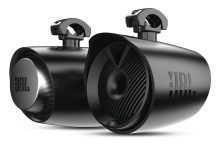AZGFD offers tips for PWC operators to avoid dangerous collisions.
Nationally, one in five accidents on the water involve a personal watercraft (PWC) and for that reason, the Arizona Game and Fish Department encourages everyone using such craft to use caution and constantly be alert to their surroundings while on the water.
Sad Statistics
The reminder comes after two people died this summer in separate incidents on the Colorado River. In one, a Bullhead City school teacher was riding a PWC when it collided with a bridge pillar and another occurred when a boat crashed into a PWC carrying three passengers, killing a 13-year-old girl.
“Our hearts go out to these families who are forever altered by these separate incidents, but the sad reality is that most deadly incidents on the water are avoidable,” said AZGFD Boating Law Administrator Tim Baumgarten. “Some of these watercraft have upwards of 300 horsepower and can reach speeds around 70 mph.
Of the 623 people who were injured while operating a PWC, 33 died from injuries sustained in a collision. Nearly 25 percent of those who died drowned, according to U.S. Coast Guard data. Everyone riding a PWC in Arizona is legally required to wear a life jacket.
“Every watercraft user – whether they’re piloting a boat or PWC – must constantly be on the lookout for other vessels, in addition to knowing how to properly maneuver and control their craft.”
There are 25,682 PWCs registered in Arizona. In 2015, there were 4,158 accidents on the water nationwide – 20 percent of which involved a personal watercraft, according to the U.S. Coast Guard. Of all the accidents involving a PWC, operator inexperience was the most common factor.
About Control
The ability to control the watercraft is based on the amount of water thrust. An experienced operator knows it’s critical to use the throttle to properly maneuver the watercraft and avoid danger. When an operator kills the engine or stops using the throttle, the craft will continue on its course and speed, and the operator will lose any ability to control the watercraft.
“While these watercraft can be great fun on the water, it is absolutely critical that they know how to properly pilot a PWC,” said AZGFD Boating Safety Education coordinator Josh Hoffman. “One of the best ways for people to prevent future accidents is to learn how to boat safely and responsibly by taking a boating safety course, where they will learn critical navigation rules and to be mindful of other people on the water.”
AZGFD offers free boating and paddlesports safety courses in Phoenix and Lake Havasu City. Those interested in taking a course can visit www.azgfd.gov/boating and click “Boating Safety Education.”
To further prevent future collisions, PWC operators should consider the acronym “S.A.F.E. R.I.D.E.R.” and the following tips from the Personal Watercraft Industry Association:
- Scan the water for hazards and other boats.
- Avoid aggressive maneuvers.
- Follow local boating laws, including rules to prevent the transfer of invasive species.
- Examine your equipment.
- React to conditions.
- Insist on a safe distance from other boats, swimmers and fixed objects.
- Drive sober.
- Evaluate weather and waterways.
- Respect the environment by avoiding fuel spills and operating close to marine life.
These Too Are Watercraft
Those heading out on standup paddle boards, kayaks and canoes are also reminded that each are legally considered watercraft. Users are required to have a wearable PFD on board while on the water and must follow the same navigation laws pertaining to all watercraft.
































Put my new seadoo in at rotory Park and found that the water up river is to low for boating.
Destroyed are seadoo with 11 hours on it. Why don’t they put a sign up at the boat ramp?
My wife and I almost drown in the current. How can they be so negligent.